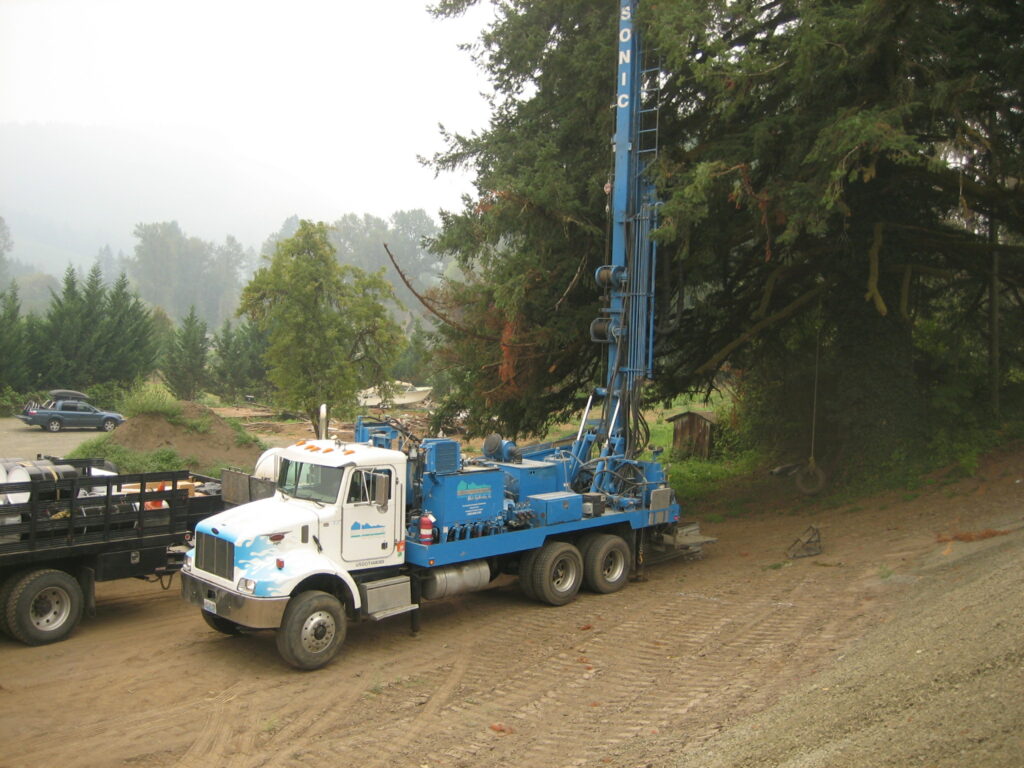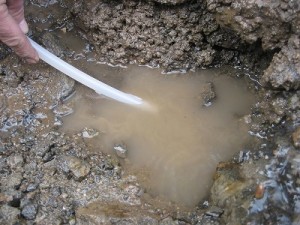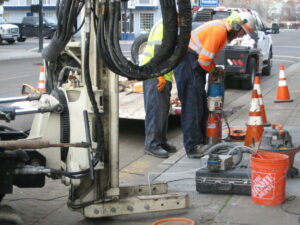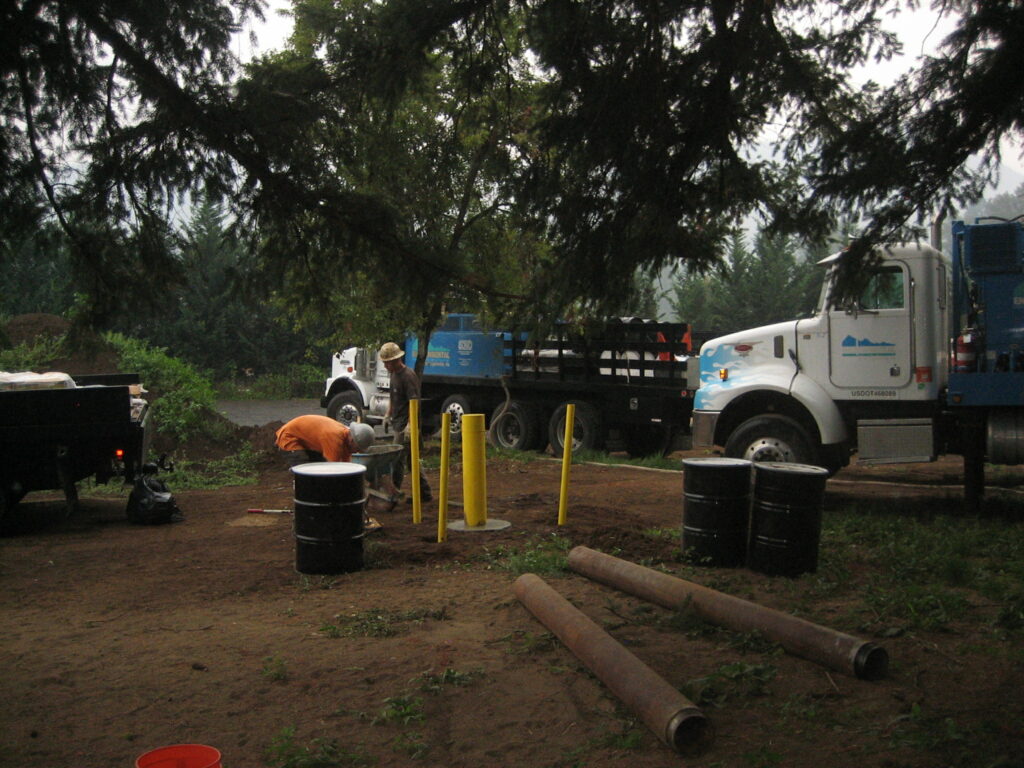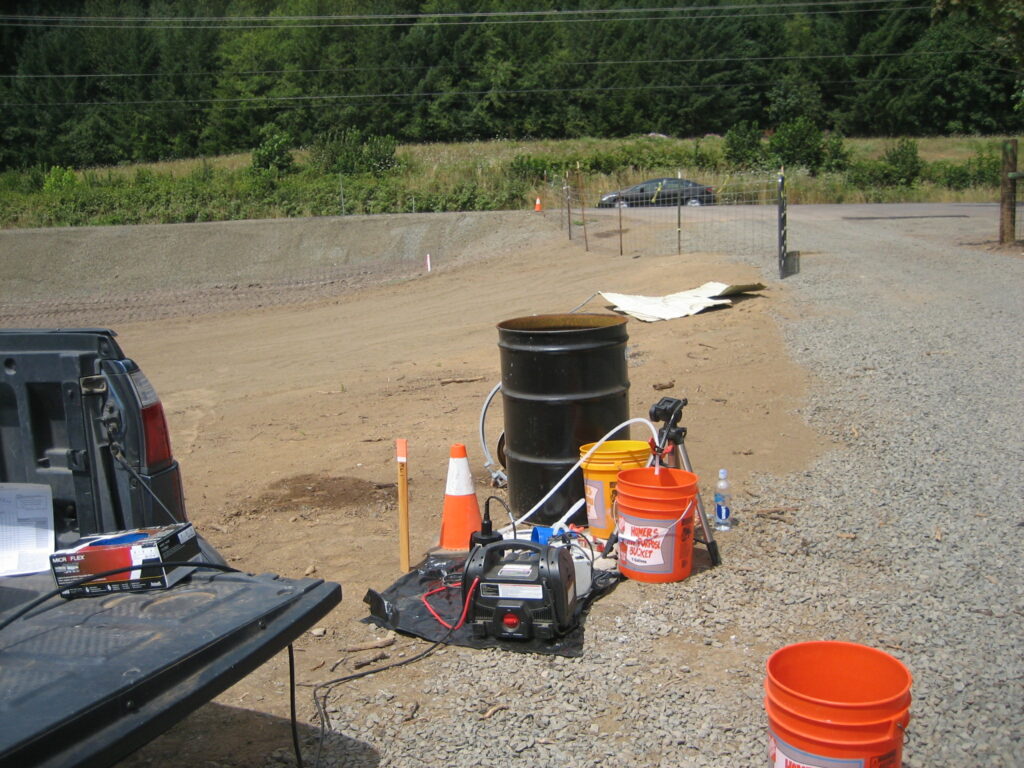Groundwater investigations come in all shapes and sizes, often as part of a comprehensive site assessment. In Oregon, groundwater sample analytical results are often compared with Oregon Department of Environmental Quality’s Risk Based Concentrations (RBCs) for various exposure pathways, in order to decide whether the groundwater is “clean enough”.
The simplest groundwater assessment, a grab sample of water from a pit, may not accurately represent groundwater conditions, as it likely represents a worst case scenario. However, a grab sample is an inexpensive starting point to help decide if groundwater is “clean enough”.
Push probe rigs are often used to collect groundwater samples. Push probes are used when only one round of groundwater samples is needed and when groundwater flow direction does not require documentation. A temporary boring is drilled, the groundwater sample is collected, and the boring is then sealed.
For sites where groundwater samples are collected over a period of time, three or more monitoring wells are installed. Groundwater sampling typically occurs once every quarter. In Oregon, groundwater sampling is discontinued, with DEQ concurrence, after four quarters of sampling has shown that groundwater cleanup goals have been met.
